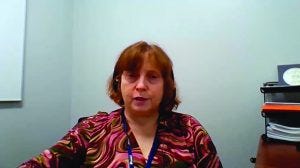Voices of Biotech
Podcast: MilliporeSigma says education vital to creating unbreakable chain for sustainability
MilliporeSigma discusses the importance of people, education, and the benefits of embracing discomfort to bolster sustainability efforts.
August 27, 2020
Sponsored by WuXi Advanced Therapies
 Tatiana Golovina, senior director, cell therapy process development,
Tatiana Golovina, senior director, cell therapy process development,
WuXi Advanced Therapies
Golovina described recent developments at WuXi Advanced Therapies, a unit within WuXi AppTec that specializes in developing and manufacturing cell and gene therapies (CGTs). Until recently, the Advanced Therapies business operated over three sites at the US Navy Yard in Philadelphia, PA. Those facilities focus on CGT clinical manufacturing, commercial manufacturing for autologous and allogeneic cell therapies, and late-stage and commercial production of viral vectors and gene-mediated cell therapies, respectively. But this year, WuXi added a fourth facility, also in the Navy Yard, that provides analytical services for advanced therapies and standard biologics.
Golovina explained that the fourth site will enable her company to increase its testing capacity significantly. Together, the four sites offer clients integrated CGT solutions.
Technological advances have accompanied facility expansions. WuXi launched an adherent-cell process for lentivirus (LV) vector production in 2017 and a suspension-cell platform for adenoassociated virus (AAV) early this year. In May 2020, the company unveiled a closed platform for manufacturing chimeric antigen receptor (CAR) T-cell therapies.
Recognizing that one process would not be effective for all CAR-T products, WuXi teams developed two workflows for that platform. The first option is designed for therapies that require fewer than 10 billion viable cells at harvest. It begins with isolation of CD4+ and CD8+ T cells using a CliniMACS Prodigy cell processer (Miltenyi Biotec).Then development teams perform activation and LV transduction, followed by one expansion step. Because the process is closed, washing of harvested material, formulation, and fill–finish steps all occur within the system. Therapies requiring more than 10 billion viable cells follow a second workflow, which begins with the same isolation and transduction steps but calls for two expansions. Both workflows use good manufacturing practice (GMP)-grade chemically defined media, activators, and cytokines.
Golovina observed that CliniMACS technology isolates T cells efficiently. Starting total cell numbers range between 3.0 × 109 and 10.0 × 1010, and CliniMACS systems recover 20–40% of total white blood cells and ~60% of CD3+ T cells at 89–98% purity. Golovina noted that clients can request an isolation step that uses a Sepax C-Pro cell processor and Ficoll-Paque density-gradient media to purify peripheral blood mononuclear cells (PBMC). That process can be simpler and more cost-effective than isolation involving magnetic beads, and the C-Pro system recovers white blood cells at comparable rates. But purity levels range between 37% and 63% in the alternative isolation step. Thus, C-Pro–Ficoll-Paque isolation is recommended only in special cases.
Expansion occurs in G-Rex gas-permeable rapid-expansion flasks (Wilson Wolf Manufacturing) for nine to 10 days, when cell growth plateaus. Harvests average two to three billion total cells, >85% of which are viable. Final cell populations are concentrated and washed in the enclosed system, achieving recoveries and viable cell counts >70% and often in the 90s. Final volumes run between 100 mL and 1,200 mL, with densities between 2 × 106 and 1 × 108 cells/mL. Drug product passes through a Sepax cell processer and then is dispensed into preevaluated cryobags. Postthaw recovery and viability run >70%.
Golovina highlighted donor-dependent variables for platform performance. For instance, the ratio of CD4+ to CD8+ T cells and the percentages of naïve and central-memory T cells can run 0.31–2.6 and 40–60%, respectively. And even though the timing of transduction has been optimized using a CAR-GFP (green fluorescent protein), lentiviral vector (lentivector), transduction efficiency can depend on vector performance and donor-cell totals. Based on studies of material from multiple donors, WuXi has determined to target 2–50 CAR-T+ cells going into transduction.
Golovina pointed out that the closed platform carves out a clear path to manufacturing because it does not require technology transfers from clients to WuXi process development teams and then from process development to manufacturing. The company’s integrated program includes assays for product characterization and batch release as well as support for regulatory filings. With the closed CAR-T platform and WuXi’s manufacturing and regulatory experience, clients can move to clinical trials quickly, yet predictably.
Watch the complete presentation now.
You May Also Like